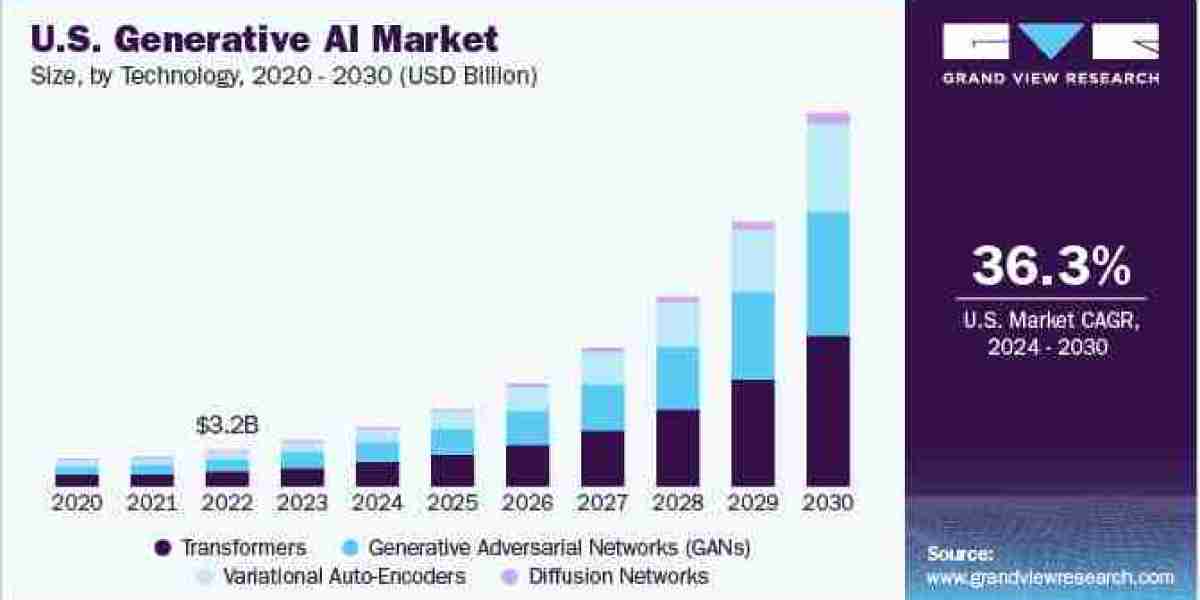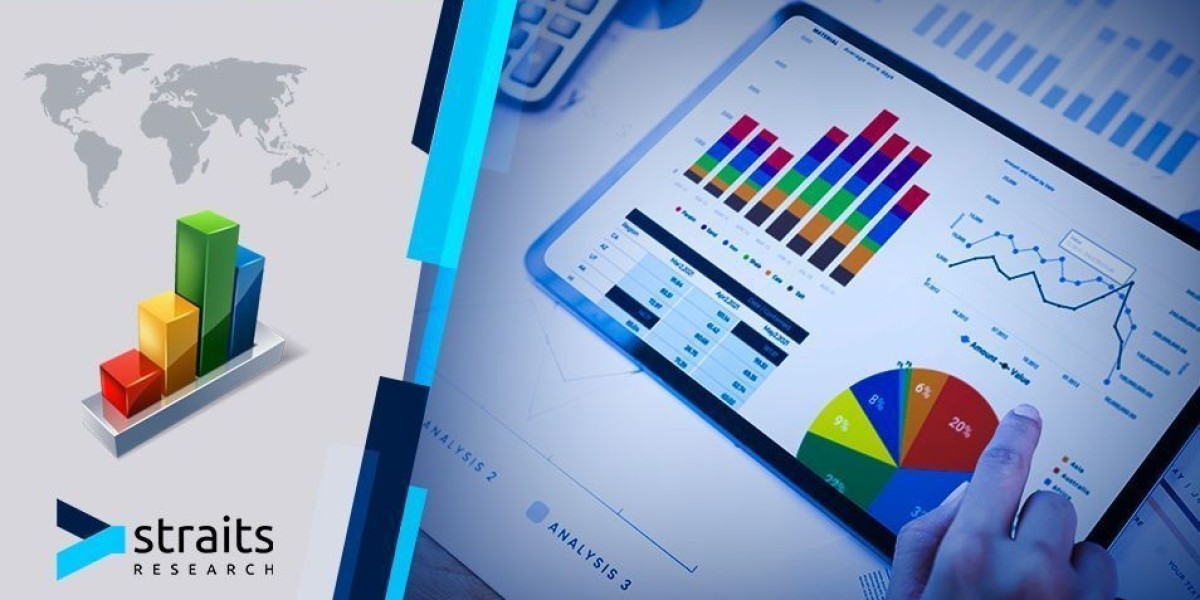Generative AI Industry Overview
The global generative AI market size was estimated at USD 13.0 billion in 2023 and is expected to grow at a compound annual growth rate (CAGR) of 36.5% from 2024 to 2030.
Factors such as the rising application scope of technologies including super-resolution, text-to-image conversion, & text-to-video conversion, and modernization of workflow across industries are driving the demand for generative AI applications among industries, such as media & entertainment, retail, manufacturing, IT, and telecom. For instance, in March 2023, Microsoft Corporation launched a model, Visual ChatGPT, which comprises multiple visual foundation models and enables users to interact with ChatGPT through graphical user interfaces. With this model, ChatGPT can handle user requests for image generation and editing.
Gather more insights about the market drivers, restrains and growth of the Generative AI Market
Furthermore, growing need for building virtual worlds in the metaverse, deployment of large language models (LLM), and conversational GenAI ability are further fueling the market demand. Generative AI in the gaming market is used for transforming the gaming industry in various ways, enhancing game development, player experiences, and content creation. The COVID-19 pandemic had a positive impact on the market as businesses shifted to the online work model, speeding up digitalization across industries. As per IBM’s Global AI Adoption Index 2022 report, over 53% of IT professionals commented that they have accelerated the roll-out of AI in the last 24 months as a part of their response to the pandemic. Moreover, during the pandemic, advanced diagnosing tools were developed using AIto analyze clinical, epidemiological, genomic data related to COVID-19, and various other imaging systems.
Generative AI makes use of unsupervised learning algorithms for spam detection, image compression, and preprocessing data stages, such as removing noise from visual data, to improve picture quality. Moreover, supervised learning algorithms are used for medical imaging and image classification. Furthermore, it has applications in various industries, such as BFSI, healthcare, automotive & transportation, IT & telecommunications, media & entertainment, and others. Generative AI is a powerful tool that can be used to create new ideas, solve problems, and create new products. Moreover, it can help organizations save money and time, increase efficiency, and enhance the quality of content generated.
Popular generative AI tools include ChatGPT, GPT-3.5, DALL-E, MidJourney, and Stable Diffusion. Generative AI is at a developing stage, which will require a skilled workforce and high investment in implementation for development. According to IBM’s global AI adoption index 2022 report, 34% of respondents believed that a lack of AI skills, expertise, or knowledge was restricting its adoption for industries. Hence, the unavailability of a skilled workforce and the high implementation costs are expected to slow down the pace of market development.
The revolution in cloud storage solutions has boosted the market expansion by offering a strong ground for technology development and deployment. Cloud storage provides scalable computing power, enabling access to resource-intensive generative AI model training for businesses without heavy capital spending. Furthermore, it guarantees high efficiency in data accessibility and collaboration, enabling the storage and sharing of various datasets across global teams. The cost-effective pay-as-you-go model of cloud storage reduces economic restraints and accelerates secure management of sensitive Generative AI projects. Offerings of pre-trained models and APIs by cloud providers simplify development procedures, whilst cloud-based infrastructure augments resource optimization and business agility. Subsequently, cloud storage solutions foster generative AI innovation, enabling companies to explore creative avenues and fuel market growth.
Generative AI is poised to create a new wave of software revenue. The technology is being used to create specialized assistants, new infrastructure products, and copilots that accelerate coding. According to a recent survey, the increasing demand for generative AI products is expected to create an upsurge of around USD 300 billion in new software revenue. The biggest beneficiaries of this trend are likely to be cloud computing companies. As enterprises shift more workloads to the public cloud, they will be looking for generative AI solutions to help them automate tasks and improve efficiency. Cloud computing companies like Amazon Web Services, Microsoft, Google, and Nvidia are already well-positioned to capitalize on this demand.
Generative AI allows models to become multimodal, which means they can process multiple modalities simultaneously, such as images and text, broadening their application areas and increasing their versatility. Generative AI enhances the connection to the world where humans communicate with computers using natural language rather than programming languages. Generative AI has the potential to transform businesses by opening new opportunities for automation, innovation, and personalization, all while lowering costs and improving customer experience. For instance, in March 2023, Grammarly, Inc., a U.S.-based AI-based writing assistant, announced the launch of GrammarlyGo, a feature of generative AI enabling users to compose writing, edit, and personalize text.
Browse through Grand View Research's Next Generation Technologies Industry Research Reports.
• The global machine learning market size was valued at USD 36.73 billion in 2022 and is expected to grow at a compound annual growth rate (CAGR) of 34.8% from 2023 to 2030.
• The global cloud computing market size was estimated at USD 602.31 billion in 2023 and is expected to grow at a CAGR of 21.2% from 2024 to 2030.
Generative AI Market Segmentation
Grand View Research has segmented the global generative AI market based on component, technology, end-use, application, model, and region:
Generative AI Component Outlook (Revenue, USD Billion, 2017 - 2030)
• Software
• Service
Generative AI Technology Outlook (Revenue, USD Billion, 2017 - 2030)
• Generative Adversarial Networks (GANs)
• Transformers
• Variational Auto-encoders
• Diffusion Networks
Generative AI End-use Outlook (Revenue, USD Billion, 2017 - 2030)
• Media & Entertainment
• BFSI
• IT & Telecommunication
• Healthcare
• Automotive & Transportation
• Gaming
• Others
Generative AI Application Outlook (Revenue, USD Billion, 2017 - 2030)
• Computer Vision
• NLP
• Robotics And Automation
• Content Generation
• Chatbots & Intelligent Virtual Assistants
• Predictive Analytics
• Others
Generative AI Model Outlook (Revenue, USD Billion, 2017 - 2030)
• Large Language Models
• Image & Video Generative Models
• Multi-modal Generative Models
• Others
Generative AI Regional Outlook (Revenue, USD Billion, 2017 - 2030)
• North America
o U.S.
o Canada
• Europe
o U.K.
o Germany
o France
o Italy
• Asia Pacific
o China
o India
o Japan
o Australia
• Latin America
o Brazil
o Mexico
o Chile
o Argentina
• Middle East and Africa
o UAE
o Saudi Arabia
o South Africa
Key Companies profiled:
• Adobe Inc.
• Amazon Web Services, Inc.
• D-ID
• Genie AI Ltd.
• Google LLC
• International Business Machines Corporation
• Microsoft Corporation
• MOSTLY AI Inc.
• Rephrase.ai
• Synthesia
Key Generative AI Company Insights
Some of the key players operating in the market include Amazon Web Services, Inc.; Google LLC (Alphabet Inc.), IBM; and Microsoft.
• Amazon Web Services (AWS) offers a variety of solutions and services for generative AI. These offerings are tailored to assist organizations in innovating and scaling generative AI applications with enterprise-grade security, privacy, and access to industry-leading foundation models. AWS provides tools, such as Amazon Bedrock, Amazon SageMaker, NVIDIA GPU-powered Amazon EC2 instances, AWS Trainium, and AWS Inferentia, to facilitate the development and scaling of generative AI applications
• Google LLC, a subsidiary of Alphabet, is a multinational technology company focusing on search engines, online advertising, computer software, cloud computing, and AI. Google LLC offers generative AI solutions and services through its Google Cloud platform. The platform provides tools such as Gemini, Google DeepMind’s multimodal model from Google DeepMind, which can understand various inputs, combine different types of information, and generate a wide range of outputs. In addition, Google Cloud's Generative AI Studio enables developers to interact with, tune, and deploy large AI models, thus accelerating generative AI to production
MOSTLY AI Inc. and Synthesia are some of the other market participants in the artificial intelligence market.
• MOSTLY AI Inc. is a technology company providing AI-based software, IT, and IT consulting services. The company’s Synthetic Data Platform leverages deep neural networks to simulate representative and realistic data at scale and retains valuable information from it while making it impossible to re-identify any individual, due to the built-in privacy mechanism
• Synthesia is a technology company that uses AI algorithms to create videos, translate them into different languages, change existing footage, and generate video content based on input, such as images and text, empowering content creators to scale their video creation with localized and personalized videos
Recent Developments
• In April 2023, Microsoft Corp. collaborated with Epic Systems, an American healthcare software company, to incorporate large language model tools and AI into Epic’s electronic health record software. This partnership aims to use generative AI to help healthcare providers increase productivity while reducing administrative burden
• In March 2021, MOSTLY AI Inc. announced its partnership with Erste Group, an Australian bank to provide its AI-based synthetic data solution. Using synthetic data, Erste Group aims to boost its digital banking innovation and enable data-based development
Order a free sample PDF of the Generative AI Market Intelligence Study, published by Grand View Research.



